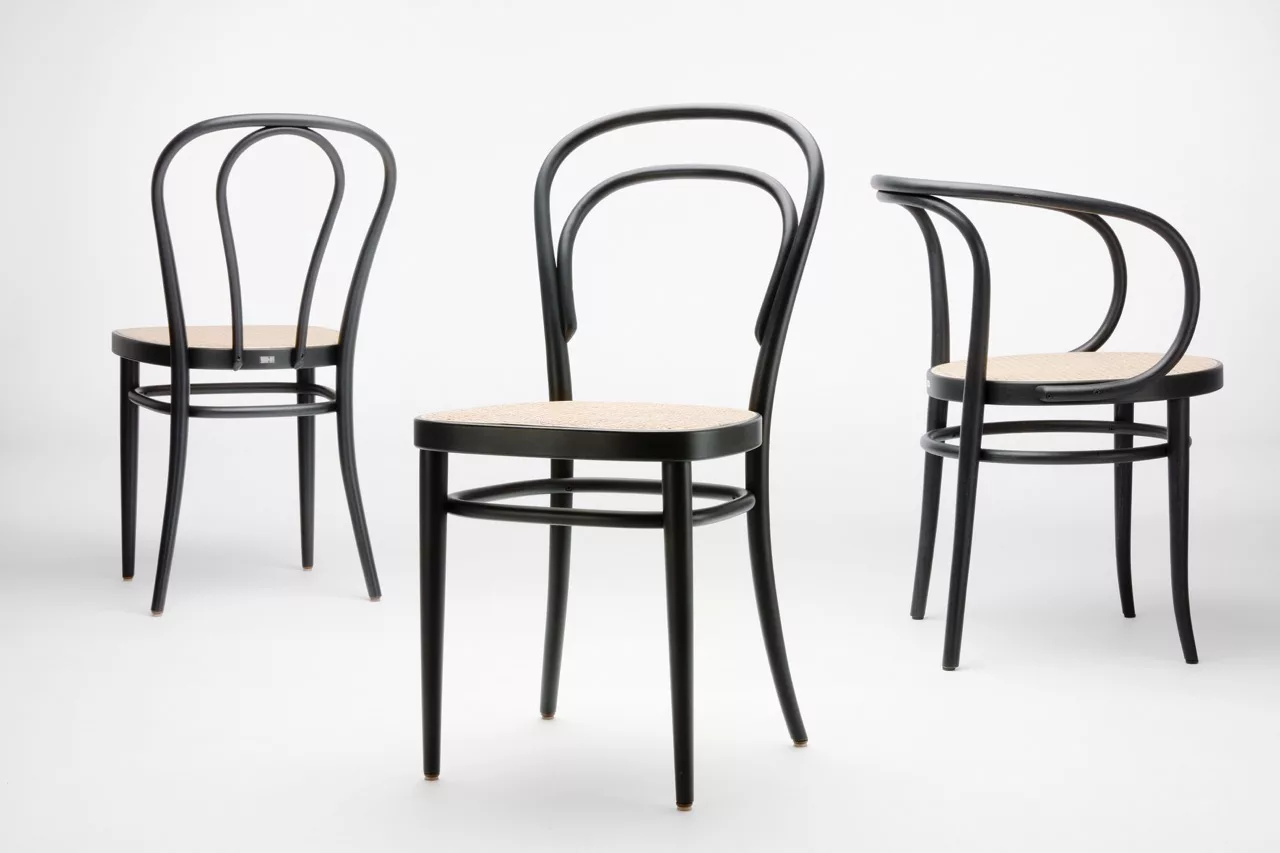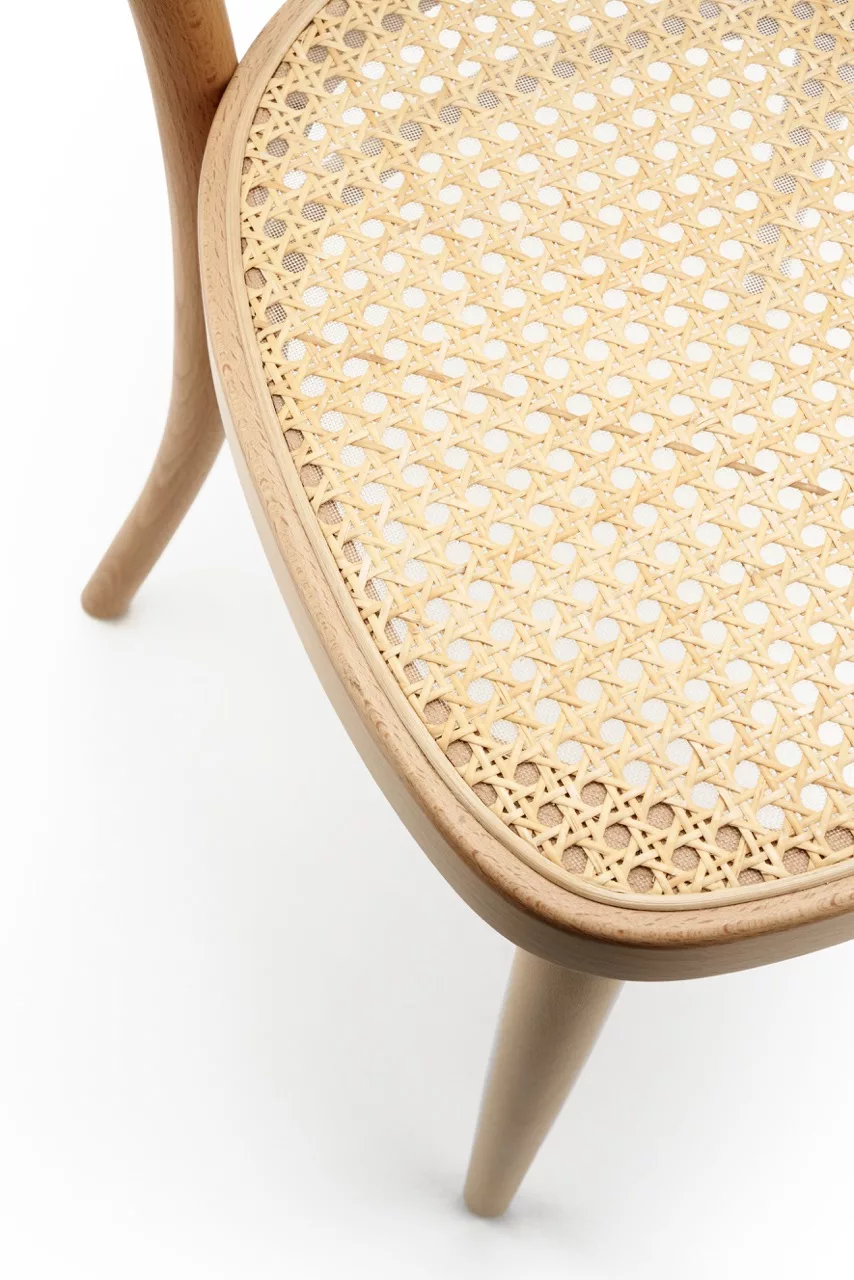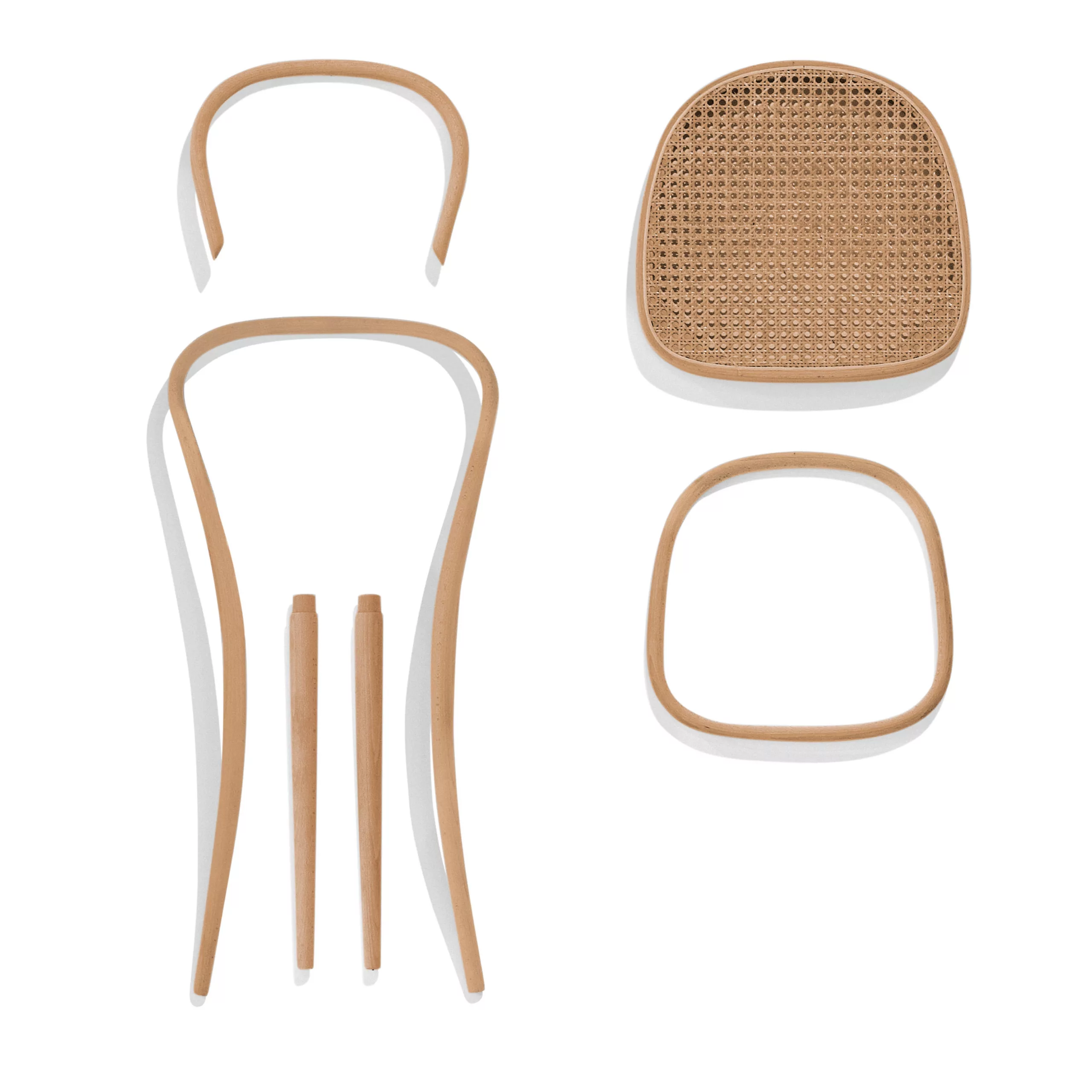Our new series explores timeless classics that have shaped modern design. From furniture and technology to everyday objects, we look at how visionary designs continue to influence us today. The series begins with Thonet Chair No. 14. Its understated elegance and resource-efficient construction make it a model of timelessness and circularity.
by Lara Lochmann

The design of the Thonet Chair No. 14 in 1860 marked a turning point in the history of furniture design: Michael Thonet (1796-1871) fundamentally changed the way furniture was made and distributed. A trained carpenter, Thonet began making intricate handmade furniture in Boppard on the Rhine. In the 1830s, he recognised the potential to revolutionise furniture production through standardised processes and innovative materials.

The Bentwood Technique: Material Transformation as Art
Thonet’s innovation was the bentwood process: He treated the beech rods with steam so that he could bend them under pressure. At the same time, he reinforced the wood on the outside of the bend with a metal band to prevent it from cracking. This technique, which overcame the physical limitations of the wood, made it possible to produce furniture that was both strong, light and aesthetically pleasing. The use of standard parts, combined with material-compliant processing, resulted in an efficiency that far surpassed traditional manufacturing methods and was to become a landmark in the future of furniture production.
The Principle of Simplicity
No. 14 is a masterpiece of reduction. It consists of just six wooden elements and ten screws – a minimum that nevertheless guarantees maximum stability. The clear lines of the construction are made up of two front legs, a curved element – which forms the rear legs and the backrest – an inner back arch, a seat and a foot ring for stabilisation. These elements could be easily assembled, disassembled and replaced – an approach that was later adapted as a modular design standard.
The ability to disassemble Chair No. 14 into its individual parts was a key component of its success. Up to 36 chairs could be transported in a single crate with a volume of one cubic metre. This space-saving packaging significantly reduced transport costs and enabled global distribution – making the No. 14 not only economically attractive, but also a symbol of efficiency and sustainability.
“You can’t make a more modern wooden chair than this (…) The Thonet chair is the measure of all things.”
– Konstantin Grcic in Weltkunst, 2021



Timeless and Universal
The No. 14 chair embodies the central principles of modern design: functionality, efficiency and aesthetics. The aesthetic effect of No. 14 lies precisely in its simplicity. The chair was not only a bestseller, but also a catalyst for the industrialisation of furniture production. By 1930, over 50 million chairs had been produced and after the patent expired in 1869, the No. 14 became one of the most copied designs in the world. The iconic chair is still produced by the Thonet company today – now under the name 214 and with an adapted, trapezoidal seat.
A piece of furniture made from a renewable, regional and non-harmful material that requires little material. Easy to repair and recycle. Space-saving shipping. All these qualities make the Thonet No. 14 an absolute role model in terms of circularity and sustainability, even from today’s perspective.

Sources:
- Bang, Ole. Thonet: Geschichte eines Stuhl. Verlag Gerd Hatje, 1979.
- Gleiniger, Andrea. Design Klassiker: Der Kaffeehausstuhl Nr 14 von Michael Thonet. Verlag form, 1998.
- Lichtenstein,Claude. Die Schwerkraft von Ideen: Eine Designgeschichte. Band 1. Bauverlag, 2022.
- Selle, Gert. Design im Alltag: Vom Thonetstuhl zum Mikrochip. Campus Verlag, 2007.
- Thonet: Biegen oder Brechen. Selbstverlag des Landesmuseums Koblenz, 1996.
- Thonet & Design. Die Neue Sammlung – The Design Museum, 2019.
- Thonet: Pionier des Industriedesigns. 1830–1900. Vitra Design Museum, 1994.
- arte Dokumentation: Change by design. Nachhaltig und schön: Möbel, 2024.
Share on Social Media

